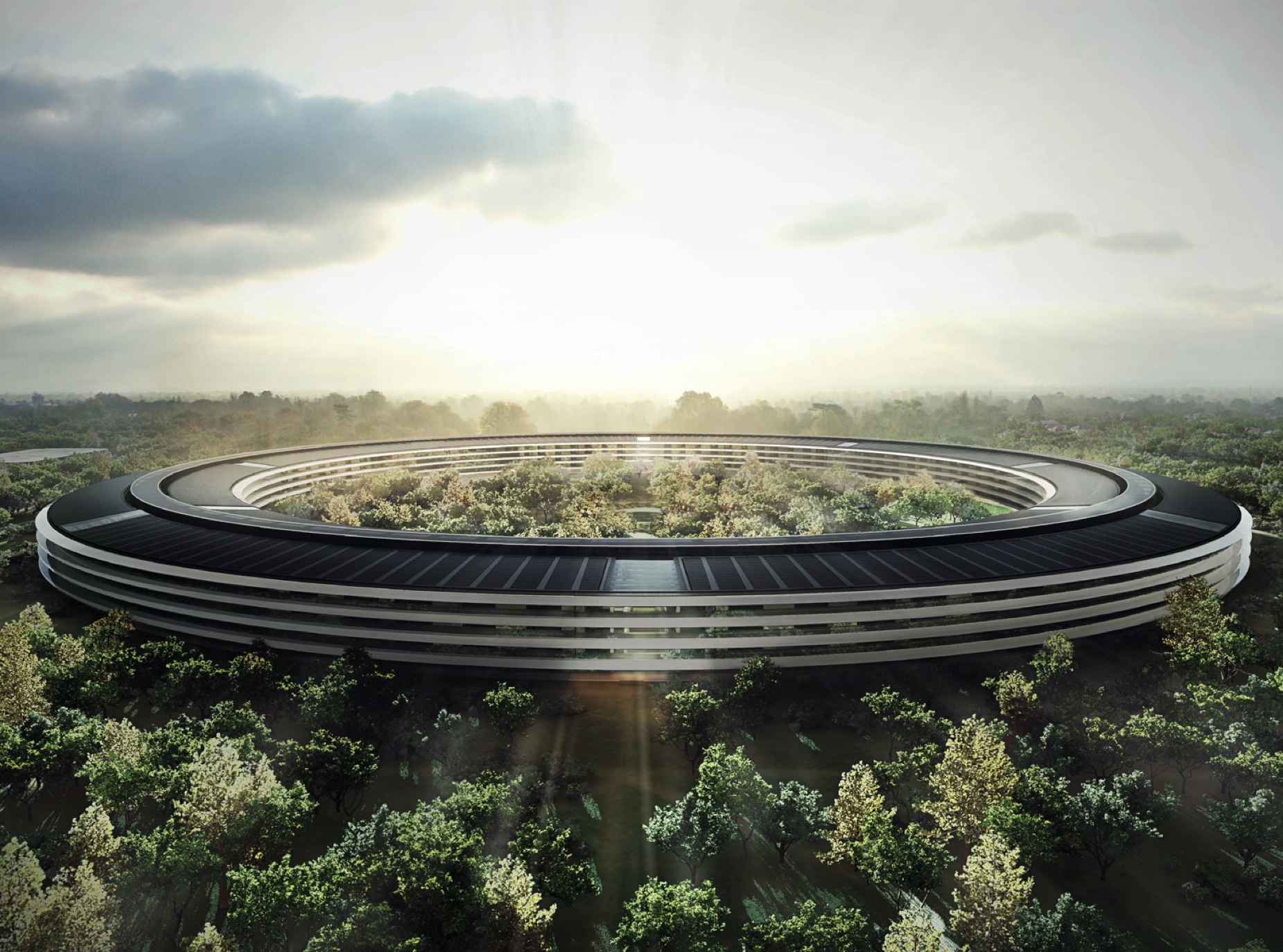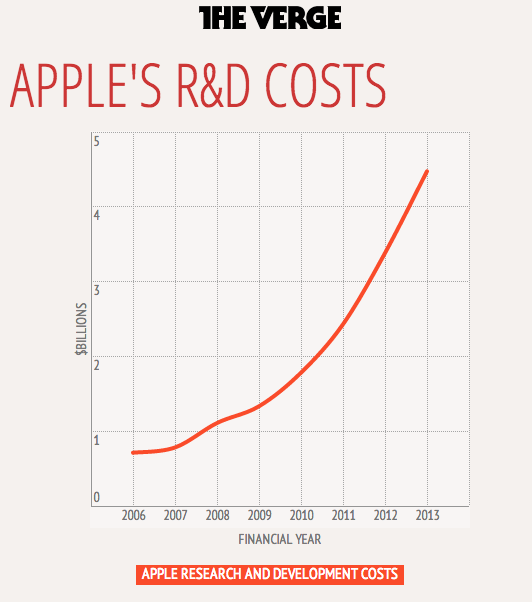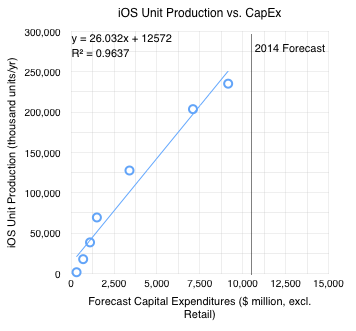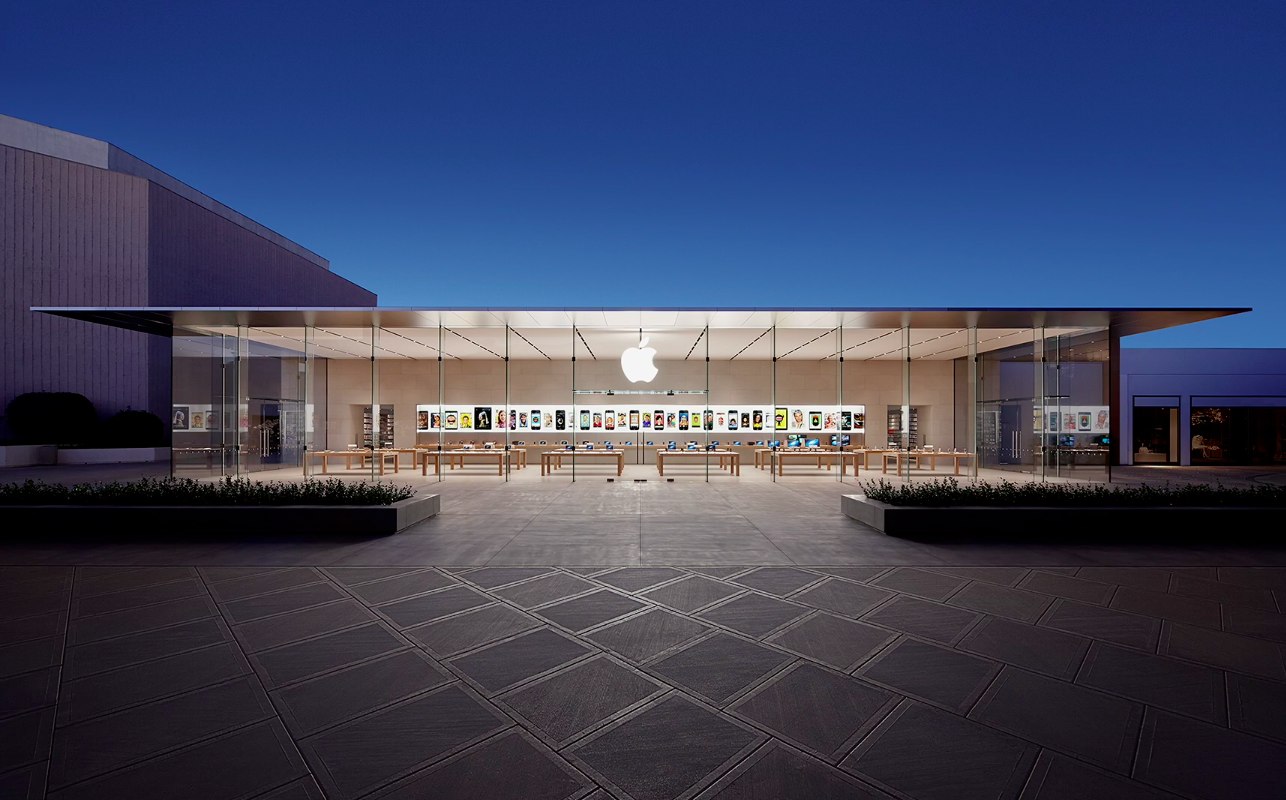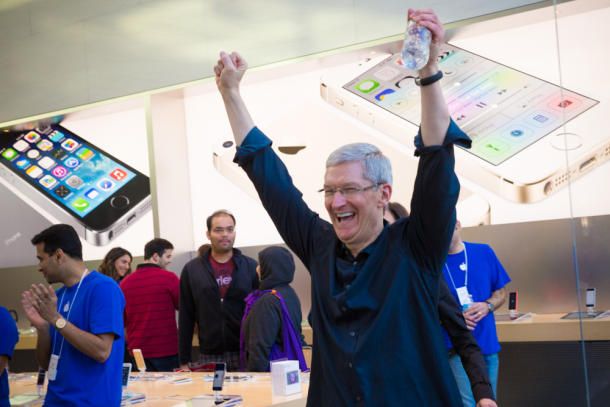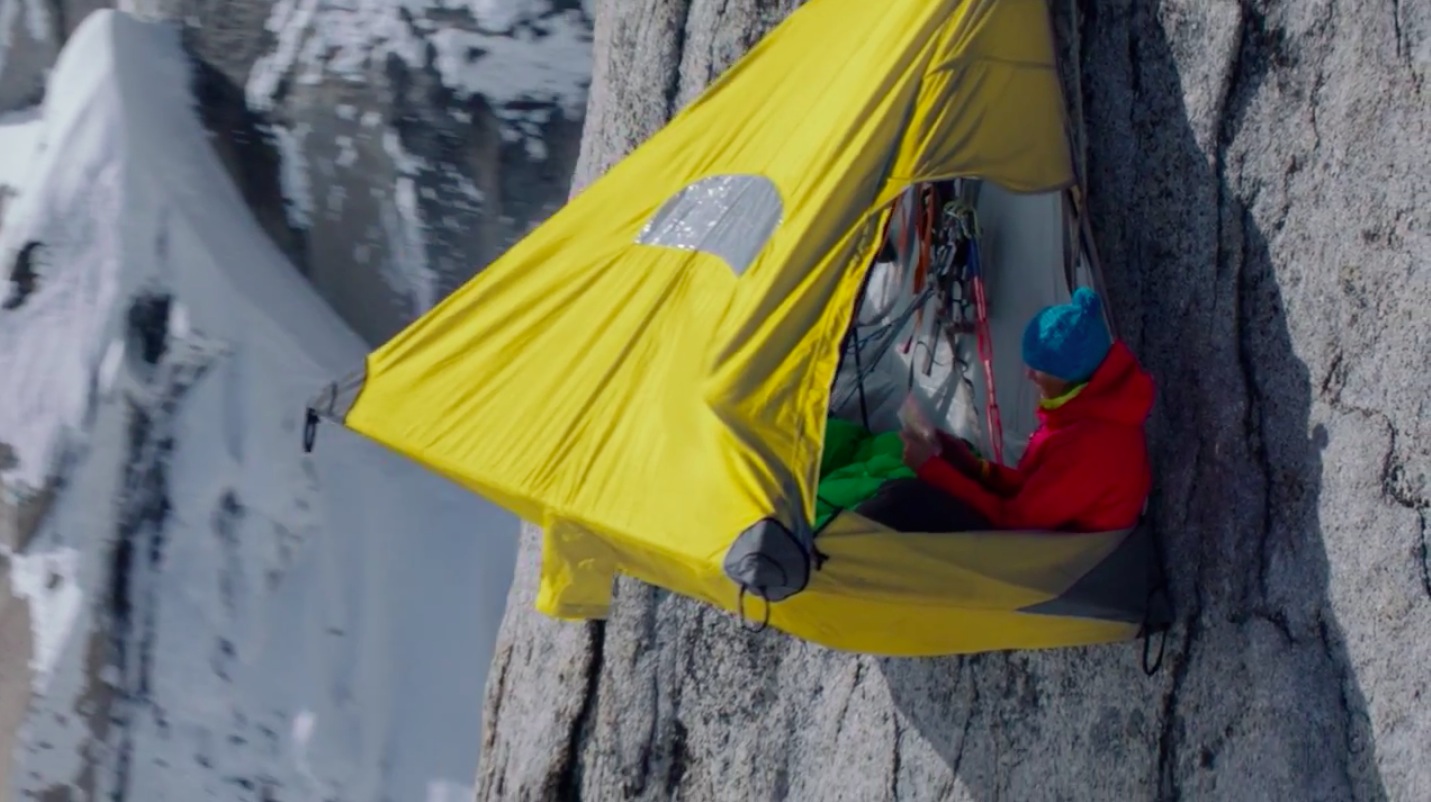Apple’s annual 10-K report to the SEC always includes interesting tidbits. This year, the tech giant said it spent $4.5 billion on research and development, a move the iPhone maker describes as “critical” to remaining competitive.
The spending marks a 32 percent increase in research over fiscal 2012, when the company spent $3.4 billion.
The consumer electronics powerhouse said it employs 80,300 full-time workers, more than half in retailing. About 30 new retail locations are planned for 2014 with 20 more stores being remodeled, the company also told the government agency Wednesday. A couple more tidbits follow…
Apple’s Form 10-K filing with the US Securities and Exchange Commission reads:
The Company continues to believe that focused investment in R&D are critical to its future growth and competitive position in the marketplace and are directly related to timely development of new and enhanced products that are central to the Company’s core business strategy.
When Apple unveiled its quarterly financial report, CEO Tim Cook told the audience new product categories will be introduced in 2014. This year, Apple has unveiled the iPhone 5s, the iPhone 5c, plus the iPad Air.
Some observers expect a long-rumored iWatch and iTV to be among the new products introduced next year. In that regard, costs associated with researching those products, securing supplies of components and tooling factories are likely should add up to Apple’s overall capital expenditure spending for 2014.
Indeed…
R&D spending on the rise
Apple pinned the growing research price tag on a growing company workforce, as well as various expansions. Growth of Apple’s R&D budget appears equal to the company’s overall growth, as well as the increasing competition from competitors such as Samsung.
During fiscal 2012, Apple spent $3.4 billion, a 39 percent increase over the $2.4 billion the company spent on R&D in 2011. And during fiscal 2013, R&D spending ballooned to $4.5 billion, a 32 percent increase versus 2012.
The Verge has this caveat:
It’s difficult to compare Apple’s R&D spending directly to its competitors — Microsoft, Google, Samsung, and even Amazon offer a far wider range of products and services. Microsoft, for example, spent $10.4 billion in its last financial year on R&D, while Samsung announced a plan in July to spend $4.5 billion purely on buildings where R&D will take place.
In August, word leaked that Apple was hiring staff for an upcoming R&D center in Taiwan. That was preceded in 2013 by R&D centers in Israel and Shanghai. But is Apple really spending more on R&D than in the past?
Actually, not really, when compared to Apple’s equally increasing profits.
Along with remaining in-step with technology, Apple spent $7 billion on capital projects.
Among those expenditures, the company said $6.5 billion was spent on manufacturing, tooling and corporate offices such as its long-sought-after 3.6 million square feet iSpaceship campus in Cupertino, pictured top of post.
Asymco’s Horace Dediu used the company’s capital expenditure estimates to predict shipments of between 250 and 285 million iOS devices in fiscal 2014, up from around 235 million in 2013.
Another $499 million went toward new stores.
The company also has manufacturing and support facilities spread across the globe. Among the sites: a manufacturing facility in Cork, Ireland; facilities in Elk Grove, California that include warehousing and distribution operations; a call center in Austin, Texas; and data centers in Newark, California; Maiden, North Carolina; Prineville, Oregon; and Reno, Nevada.
“Outside the U.S., the Company owned additional facilities for various purposes,” reads the filing.
Retail expansion
When it comes to retail, Apple has become quite the building fool.
All told, Apple opened 26 retail sites in 2013, almost reaching its self-imposed goal of 30 new retail outlets in 2013. The company said it plans to spend another $550 million in 2014 to build 30 new retail locations, most outside the U.S., as well as remodel 20 sites that already exist, including the gorgeous Stanford store in North California seen below.
However, per-store revenue slipped a bit to $50.2 billion, down from $51.5 billion.
The company either owns or leases 19.1 million square feet of space – the majority (63 percent) of that leased. That’s up from 17.3 million in fiscal 2012. Apple owns outright 1,428 acres of land – that’s roughly 9.5 percent of the size of Manhattan Island.
Total employee headcount was 80,300 full-time equivalents, an increase over 72,800 at the end of fiscal 2012, with more than half (or 42,800) being employed in the retail operations. However, the retail division grew by only 400 to 42,800 full-time equivalents.
Another intriguing retail factoid: The number of per-store full-time Apple retail employees shrank to 102.9 in 2013, down from 108.7 in fiscal 2012. That shrinkage is seen in how most of Apple’s retail division saw only 400 new full-time workers for a total of 42,800 full-time employees hawking iDevices.
Advertising expenditure
While R&D costs have seen a marked increase, spending on advertising rose by just a blip to $1.1 billion, up from $1 billion in 2012. The small increase could be credited to the amount of free advertising Apple received from frequently being in the headlines.
A scene from Apple’s lavish ‘Life on iPad’ promotional video.
Along with its stock’s ups and downs, the company has an army of bloggers and others who are rabid promoters of the brand.
Lastly, thanks to calls for the ultra-profitable company to give stockowners back some of its wealth, Apple paid $10.5 billion worth of dividends, a dramatic increase from just the $2.5 billion paid out a year earlier. As of October 18, Apple said there were 24,710 AAPL shareholders of record.
What was your favorite highlight from Apple’s filing?
